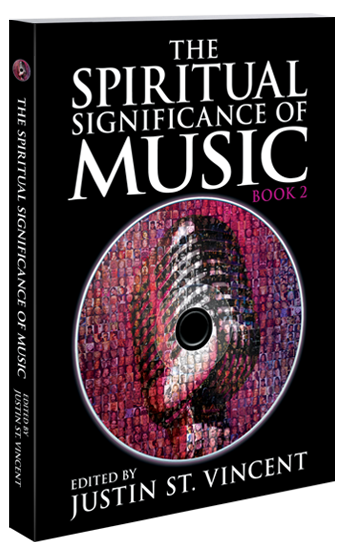| NAKED CITY |
|
Naked
City were more than the sum of its elements: John Zorn [Alto-Sax], Bill Frisell [Guitar], Wayne Horvitz [Keyboards], Fred Frith [Bass], Joey Baron [Drums], and Yamatsuka Eye or Mike Patton [Vocals]: this was a band able to play almost anything anyone could think of. Having all these albums put together clears the whole process that guided John Zorn’s mind during those years. The band was born in May 1988 at the Knitting Factory and it ended on September 1993 on the first ZornFest in the same place. Between the two dates above, seven albums were pulled out; starting from the first effort “Naked City” (1989), it was clear enough that this was everything but a normal band. Surf tunes, soundtracks covers originally by Ennio Morricone, Henry Mancini, Jerry Goldsmith, Johnny Mandel, George Delerue, jazz moods from an Ornette Coleman cover, hardcore punk speedy pieces: all jam packed! This album is a sort of overview of what Naked City were meant to be: an ensemble ready to face different styles of music at extreme speed, sometimes even in the same song! The following projects move into different and more definite directions. “Heretic, Jeux Des Dames Cruelles” (1992) is a collection of short improvised cues played by fragments of the band: duos and trios with players rotating and confronting each other. The John Zorn/Yamatsuka Eye duos must be mentioned because they anticipate a long and strong telepathic collaboration between these two figures. “Grand Guignol” (1992) features the artwork that “disappointed” This Zorn/Eye bond gets stronger in “Leng Tch’e” (1990), Last but not the least, “Radio” (1993) brings Naked City back |
 Naked City without lead vocalist.  Naked City in Montreux 1990.  Naked City with Yamatsuka Eye 1991.  Naked City with Mike Patton 1992.  Naked City with Mike Patton 2003. “Naked City” review written by Stefano Pocci. |
| Book Review |
| AUTHOR: John Zorn & Kazunori Sugiyama TITLE: Eight Million Stories – Naked City Ephemera LABEL: Tzadik Records RELEASED: February 22, 2005 LENGTH: 130 Pages |
Eight
Million Stories – Naked City Ephemera is available inside the Naked City Box-Set. This exclusive ephemera contains all Naked City’s original uncensored album artwork, promotional images, live photography, and even the Naked City Scrapbooks illuminating John Zorn’s incredible genre-shifting compositions. This one-hundred and thirty page book includes testimonials where musicians and admirers have reflected on how Naked City’s music has changed their life forever. |
CD Review |
| ARTIST: Naked City ALBUM: The Complete Studio Recordings [BOX-SET] LABEL: Tzadik Records RELEASED: February 22, 2005 DURATION: 326:43 – 121 Tracks |
The
Complete Studio Recordings has been radically remastered by John Zorn and Scott Hull, making them available through this exclusive box-set from Tzadik Records. Naked City’s music is now louder, clearer, and more intense than ever before. The Complete Studio Recordings comes with a specially printed 130 page booklet entitled “Eight Million Stories – Naked City Ephemera”. A collector’s edition and essential for those wanting to experience Naked City’s music in the way it was intended. |
Selected Discography |
| ARTIST: John Zorn ALBUM: Naked City LABEL: Nonesuch Records RELEASED: February 20, 1990 DURATION: 56:35 – 24 Tracks |
ARTIST: Naked City ALBUM: Grand Guignol LABEL: Avant Records RELEASED: 1991 DURATION: 58:31 – 41 Tracks |
| ARTIST: Naked City ALBUM: Radio LABEL: Avant Records RELEASED: December 10, 1993 DURATION: 57:23 – 19 Tracks |
ARTIST: Naked City ALBUM: Heretic, Jeux Des Dames Cruelles LABEL: Avant Records RELEASED: December 10, 1993 DURATION: 56:35 – 24 Tracks |
| ARTIST: Naked City ALBUM: Absinthe LABEL: Avant Records RELEASED: December 10, 1993 DURATION: 46:17 – 9 Tracks |
ARTIST: Naked City ALBUM: Black Box: Torture Garden & Leng Tch’e (2CD) LABEL: Tzadik Records RELEASED: 1996 DURATION: 57:52 – 43 Tracks |
| ARTIST: Naked City ALBUM: Naked City Live Vol. 1: Knitting Factory 1989 LABEL: Tzadik Records RELEASED: May 2002 DURATION: 52:09 – 20 Tracks |
ARTIST: Naked City ALBUM: The Complete Studio Recordings [BOX-SET] LABEL: Tzadik Records RELEASED: February 22, 2005 DURATION: 326:43 – 121 Tracks |
| Exclusive Interview |
|
Justin
Sanvicens from Xtreme Music received responses to an e-mail interview with Wayne Horvitz on July 16, 2005. Xtreme Music: Many were first introduced to your music through John Zorn’s Naked City. Please tell us about when you first met John Zorn, and how you got involved in Naked City? Wayne Horvitz: Naked Xtreme Music: Both Yamantaka Eye (previously known as Wayne Horvitz: Well I enjoyed them a lot, and in many ways for selfish Wayne Horvitz: You would have to ask John. Frankly it was so long Xtreme Music: Who would you say are your main influences Wayne Horvitz: Just like everyone else, I listened to a lot of music Wayne Horvitz: Well I wouldn’t say that Sonny Xtreme Music: Please tell us about the writing processes Wayne Horvitz: Pigpen Zony Wayne Horvitz: I am mostly focusing on pieces for classical players, Xtreme Music: What positive highlights and experiences Wayne Horvitz: Well playing music is the positive highlight, much Xtreme Music: Please mention some of the Naked City compositions Wayne Horvitz: Well, I was always partial to “Sex Fiend”, Wayne Horvitz: Man I am the wrong person to ask, I have to admit the |










